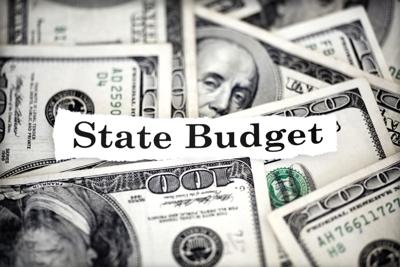
By Jasmine Hall
Wyoming Tribune Eagle
Via- Wyoming News Exchange
CHEYENNE — A new report projects all of the state’s major revenue streams will exceed previous forecasts, with an extra $329 million in general fund and budget reserve account revenues expected this fiscal year.
The total estimate for the 2023- 24 biennium increased by close to $738 million since January, according to the October Consensus Revenue Estimating Group report, released Wednesday.
CREG co-Chairman Don Richards cited increased oil and natural gas prices, higher sales and use taxes and modest capital gains from the Legislative Stabilization Reserve Account, or LSRA, better known as the “rainy-day fund.”
“Overall inflation is elevated and more persistent than anticipated just a year ago. This inflationary environment drove increases in sales and use tax collections, as well as non-mineral assessed valuations,” the new CREG report stated. “Inflation, coupled with Russia’s invasion of Ukraine, and after years of underinvestment in domestic oil and natural gas production, provided substantial increases in mineral tax collections.”
Those increases were driven mostly by higher prices, rather than a mineral industry productivity increase.
Richards provided more details during his presentation Wednesday evening to the Legislature’s Joint Appropriations Committee.
The government official, in part, pointed to a surge in education accounts.
“If you count the actuals, as well as the forecast, it’s about $1.1 billion more than when you left here in March, in the general fund and budget reserve combined, and it finds its way to the LSRA,” Richards said. “And another $1.1 billion on the school side.”
Although part of this also found its way into the reserve account, he said one of the largest jumps reported was in the School Foundation Program Account revenue.
The forecast balance for the next biennium improved by $978 million. The highest contributors to the increase were $459 million in mineral ad valorem taxes; $191 million in federal mineral royalties; $172 million in non-mineral property taxes, and $91 million in excess fiscal year 2022 school district property taxes.
Richards said there was little risk of error in these estimates, because it is a known amount of money coming in.
Wyoming’s entitlement to the school districts will also be lower, because local property tax collections were higher.
“No one in my room, including myself, has ever seen a forecast cash balance of the School Foundation Program not in the negative, but positive $950 million,” he said. “And that’s not a long time away. That’s 21 months away.”
Despite an increase across the board for the 2023-24 biennium forecasts, Gov. Mark Gordon stressed a fiscally conservative response to rising state revenues.
In a statement Wednesday, he welcomed the news. When using the funds, most should be considered one-time in nature, he said.
“We must remember that there has been a lot of volatility in our mineral revenues over the past few years, and that remains a concern for our future,” he said. “Wyoming continues to face a series of headwinds from a variety of factors, including a federal energy policy and misguided investment mandates that are hostile to our state’s primary industries.”
Gordon concluded that while it is encouraging to see consumers appreciate the value of “dependable and dispatchable energy,” he warned the improved revenues were offset by inflation. He said this is the time when Wyoming must look to the future and make wise investments for future generations.
The governor is expected to release his supplemental budget proposal on Nov. 18, and Richards said there is $912 million available under statute for his recommendation.
Richards said $738 million came from the general fund and budget reserve account CREG report estimates, $45 million from reversions by state agencies and $129 million left over from the previous year.
Legislators said they were surprised $45 million was reverted from agencies, following 15% budget reductions in the 2021-22 biennium.
Richards said it was likely due to positions not being filled and labor market challenges.
CREG coChairman Kevin Hibbard added that it was also connected to budgets being supported by federal funds received during the pandemic, such as the $2.4 billion in federal-formula funding that directly went to state agencies.
Richards said the governor doesn’t have to spend the full $912 million.
Hibbard advised caution when it came to $738 million of the total, because “we are enjoying ARPA (American Rescue Plan Act) revenue replacement to the tune of $406 million.”
“It’s fascinating,” said Appropriations Committee co-Chairman Rep. Bob Nicholas, R-Cheyenne. “Thus, the governor’s press release, take care of what you spend.”





